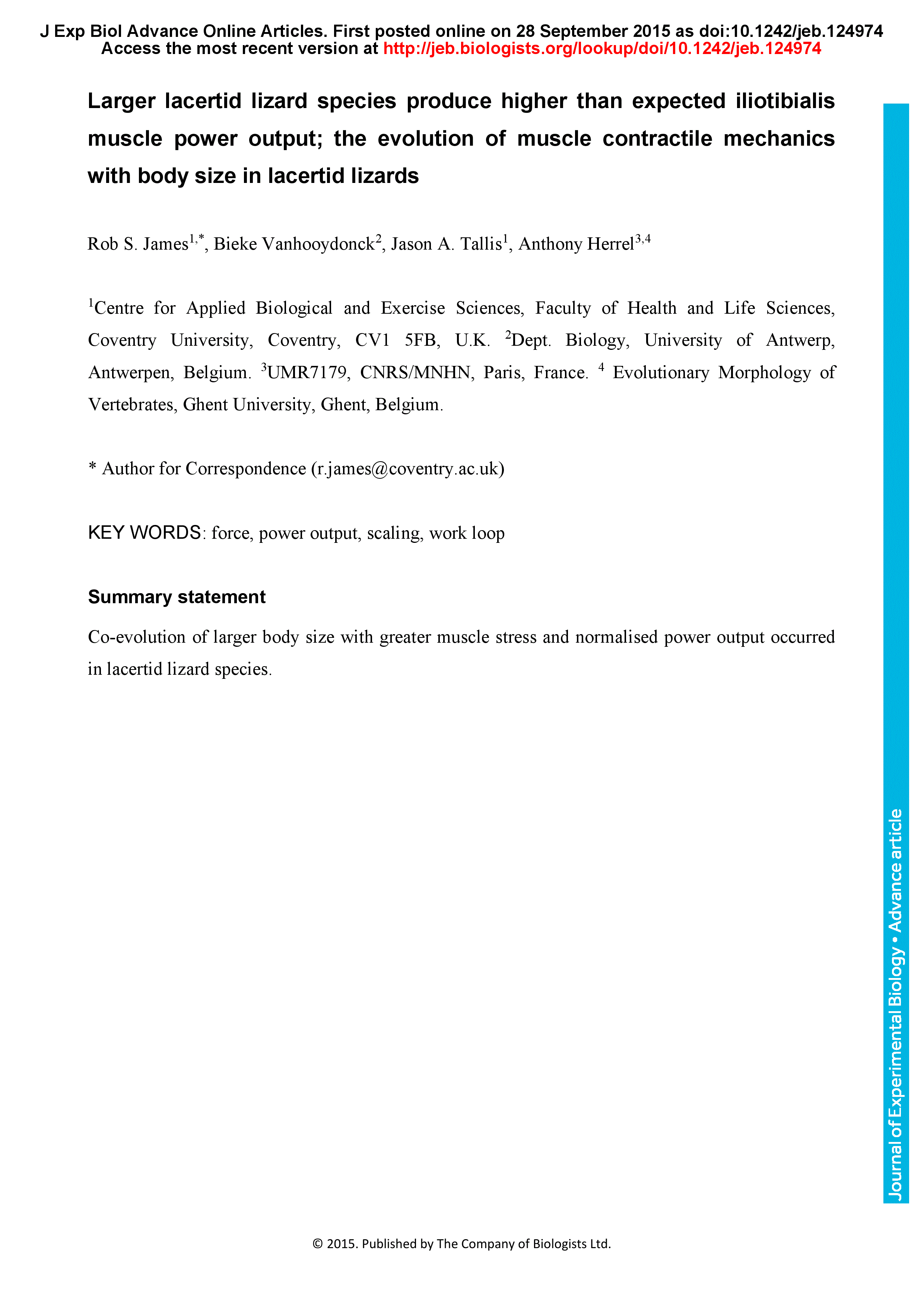Increases in body size can lead to alterations in morphology, physiology, locomotor performance and behavior of animals. Most studies considering the effects of scaling on muscle performance have studied within species effects, with few studies considering differences between species. A previous review of published data indicated that maximum muscle shortening velocity decreases, but that maximum isometric stress does not change, with increased body mass across species of terrestrial animals. However, such previous analyses have not accounted for the phylogenetic relatedness of the species studied. Our aim was to use phylogenetically informed analysis to determine the effects of body size on isolated iliotibialis muscle performance across 17 species of lacertid lizards. Between one and five individuals were used to obtain mean performance values for each species. We analysed the relationship between each variable and body size, as estimated by snout-vent length (SVL), whilst taking into account the phylogenetic relationships between species. We found that isometric tetanus relaxation time, maximal tetanus stress (force per muscle cross-sectional area) and maximal work loop power output (normalized to muscle mass) all significantly increased with greater SVL. In contrast, fatigue resistance during repeated work loops significantly decreased with SVL and there was no effect of size on tetanus activation time. If we compare our findings to those that would be predicted by dynamic similarity, then as these lacertid species become bigger there is a greater than expected increase in the normalized muscle power output, likely to counter the larger than expected increase in body mass.
Larger lacertid lizard species produce higher than expected iliotibialis muscle power output; the evolution of muscle contractile mechanics with body size in lacertid lizards
Currently Viewing Accepted Manuscript - Newer Version Available
- Split-screen
- Views Icon Views
- Open the PDF for in another window
-
Article Versions Icon
Versions
- Version of Record 01 November 2015
- Accepted Manuscript 01 January 2015
- Share Icon Share
-
Tools Icon
Tools
- Search Site
Rob S. James, Bieke Vanhooydonck, Jason A. Tallis, Anthony Herrel; Larger lacertid lizard species produce higher than expected iliotibialis muscle power output; the evolution of muscle contractile mechanics with body size in lacertid lizards. J Exp Biol 2015; jeb.124974. doi: https://doi.org/10.1242/jeb.124974
Download citation file:
Advertisement
2023 JEB Outstanding Paper Prize shortlist and winner

The JEB Editors are delighted to announce the shortlisted authors for the 2023 JEB Outstanding Paper Prize. Read the winning paper - Tiny spies: mosquito antennae are sensitive sensors for eavesdropping on frog calls - by Hoover Pantoja-Sanchez and Brian Leavell from Ximena Bernal's lab at Purdue University, USA.
JEB Science Communication Workshop for ECRs

If you’re an early-career researcher interested in science communication and are attending the SEB Annual Conference in Prague this summer, come a day early and join the JEB Editors at a sci comm workshop to learn the key writing skills needed to promote your research to a broad audience beyond your peers (1 July at 14.30-17.30). Places are limited to 24 attendees, and applicants should apply through the SEB registration page by 30 April 2024.
Bridging the gap between controlled conditions and natural habitats in understanding behaviour

Novel technologies enable behavioural experiments with non-model species, in naturalistic habitats and with underexplored behaviours. In their Commentary, Scholz and colleagues discuss how to obtain a deeper understanding of the natural ecology and lifestyle of study animals.
Beluga metabolic measures could help save species

To help save animals from extinction, it’s important to understand what each species needs to survive. This led Jason John et al. to measure the metabolic rates of captive belugas to develop a ‘fish calculator’ showing that the whales need to eat ~23 salmon per day.
ECR Workshop on Positive Peer Review

Are you an ECR looking for tips on how to write concise, astute and useful manuscript reviews? If so, join the JEB Editors at a 2-hour JEB-sponsored Workshop on Positive Peer Review at the Canadian Society of Zoologists annual meeting in Moncton on 9 May 2024 at 13.00-15.00. There are 25 spaces for ECRs and selection is first come, first serve. To sign up, check the ECR Workshop box when you register for the CSZ meeting.



